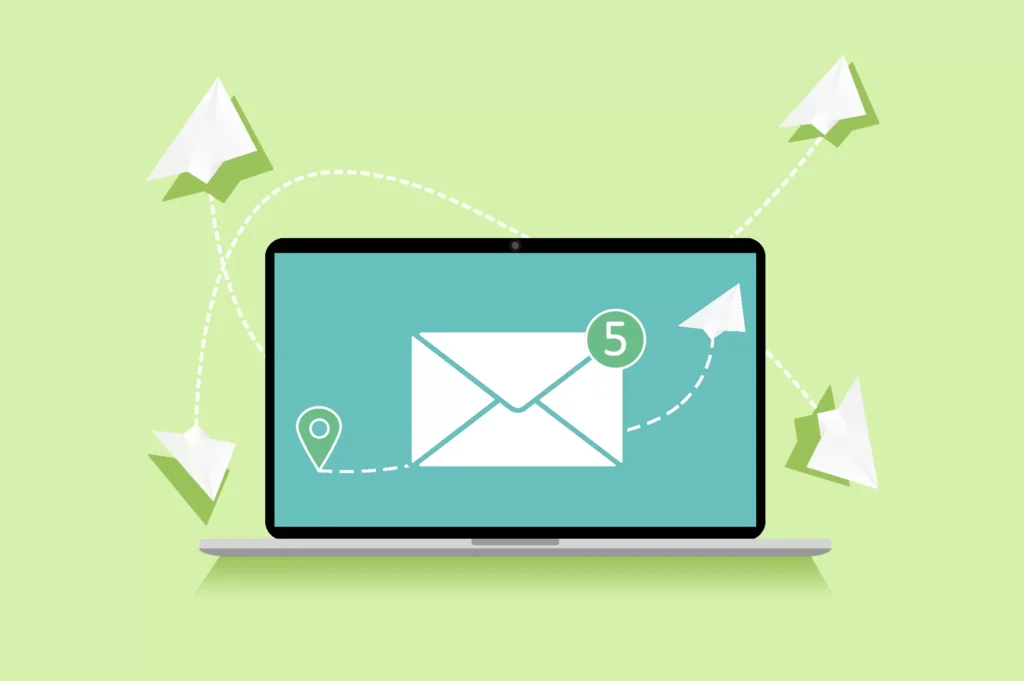Lead nurturing is a critical component of any successful marketing strategy, allowing businesses to cultivate relationships with potential customers and guide them through the buying journey. In today’s competitive landscape, where customer attention spans are increasingly fragmented, the ability to effectively nurture leads can make all the difference in converting prospects into loyal customers. In this comprehensive guide, we will explore four key areas of focus for your lead nurturing emails, while also delving into strategies for winning back lost customers. From demonstrating genuine care in communication to implementing automated follow-up sequences and developing a strategic win-back plan, each aspect plays a crucial role in driving engagement and ultimately, business growth. Join us as we delve into the intricacies of lead nurturing and discover actionable insights to enhance your marketing efforts.
1. Personalize Your Communication
When it comes to nurturing leads, making them feel special is key. Imagine receiving an email that feels like it’s just for you—it catches your attention, right? That’s what personalized communication is all about. Let’s say you’re interested in buying a new phone, and a company sends you an email addressing you by name and suggesting phones based on your previous searches. That’s personalization in action! It shows that the company cares about your needs and preferences.
2. Provide Helpful and Relevant Content

Source: kinsta.com
When you’re trying to win someone over, it’s important to give them something valuable. Think about it like this: if you’re trying to convince a friend to try a new restaurant, you wouldn’t just tell them to go without explaining why it’s great. You’d probably share some mouth-watering details about the delicious food and cozy atmosphere, right? The same goes for lead nurturing emails. You want to provide content that’s helpful and relevant to your leads’ interests and needs.
3. Create a Sense of Urgency and Exclusivity
In lead nurturing emails, it’s crucial to instill a sense of urgency and exclusivity to prompt action from your leads. One effective way to achieve this is by offering limited-time deals or exclusive discounts, enticing your leads to act swiftly. Utilize compelling language in your subject lines and email content to convey the urgency of the offer. Highlight the benefits of immediate action, such as saving money or gaining access to exclusive products or services. Additionally, ensure your emails are visually appealing and accessible across all devices by incorporating responsive Mailchimp email templates. Finally, limit the availability of your offers to create a sense of scarcity, motivating your leads to make a decision sooner rather than later.
- Offer limited-time deals or exclusive discounts to encourage immediate action.
- Use compelling language in your subject lines and email content to convey urgency.
- Highlight the benefits of acting quickly, such as saving money or gaining access to exclusive products.
- Incorporate responsive Mailchimp email templates to ensure your emails look great on any device.
- Limit the availability of offers to create a sense of scarcity and drive conversions.
4. Implement Automated Follow-Up Sequences

Source: dandelionmarketing.com
Imagine setting up a system that automatically sends follow-up emails to your leads without you having to lift a finger. That’s what automated follow-up sequences do in lead nurturing. Think of it like sending reminders to your friend about that movie night you planned together. Automated sequences help you stay connected with your leads by sending them a series of emails at just the right times. Whether it’s a thank-you email after they sign up for your newsletter or a gentle reminder about the products they showed interest in, these automated sequences keep the conversation going and increase the chances of turning leads into customers.
Monitor and Analyze Lead Engagement Metrics
Imagine having a special tool that lets you peek into how people are interacting with your emails. That’s what monitoring and analyzing lead engagement metrics is all about. It’s like checking the scoreboard during a game to see how well your team is doing. With lead nurturing emails, you can keep track of important metrics like how many people open your emails, click on your links, or make a purchase. By paying attention to these metrics, you can see what’s working well and what might need some tweaking. For example, if you notice that a lot of people are clicking on a particular link in your email, you might want to send more emails with similar content. On the other hand, if you see that hardly anyone is opening your emails, you might need to rethink your subject lines or the timing of your sends. By monitoring and analyzing these metrics, you can make informed decisions about how to improve your lead-nurturing efforts and ultimately win back lost customers.
Develop a Strategic Win-Back Plan
When it comes to winning back lost customers, having a strategic plan in place is essential. This involves identifying lost leads, understanding why they disengaged, and crafting personalized emails to re-engage them. Implementing a series of follow-up emails and continuously monitoring their effectiveness allows for adjustments to be made to the win-back plan as needed. Here’s how to develop a strategic win-back plan:
- Identify lost leads: Start by identifying leads who haven’t engaged with your emails or made a purchase in a while.
- Analyze reasons for disengagement: Understand why these leads may have become disengaged, whether it’s due to lack of interest, better offers elsewhere, or other reasons.
- Craft personalized win-back emails: Create personalized emails tailored to address the specific concerns or interests of lost leads, such as offering special discounts, highlighting new features, or addressing objections.
- Implement a series of follow-up emails: Set up a series of follow-up emails to be sent at strategic intervals, reminding lost leads of the value your products or services offer and encouraging them to re-engage.
- Monitor and adjust: Continuously monitor the effectiveness of your win-back emails by tracking metrics like open rates, click-through rates, and conversion rates. Based on this data, make adjustments to your win-back plan as needed to improve results and successfully win back lost customers.
5. Measure Success and Iterate

Source: briancartergroup.com
Once you’ve implemented your lead nurturing emails and win-back strategies, it’s important to measure their success and continuously improve. Think of it like baking cookies: you need to taste-test them to see if they’re just right, and if not, you tweak the recipe for next time. Similarly, measuring the success of your email campaigns involves tracking key metrics like open rates, click-through rates, and conversion rates. These metrics give you valuable insights into how well your emails are performing and where there’s room for improvement. For example, if you notice that your open rates are low, you might need to work on improving your subject lines to make them more enticing. If your click-through rates are high but your conversion rates are low, you might need to optimize your landing pages to make them more persuasive. By measuring success and iterating on your strategies, you can continuously refine your lead-nurturing emails and win-back efforts to maximize their effectiveness and ultimately drive more sales.
Conclusion
In the world of marketing, lead nurturing emails play a crucial role in turning potential customers into loyal patrons. By focusing on four key strategies, businesses can effectively nurture leads and win back lost customers. Firstly, by delivering personalized and relevant content, companies can make their leads feel valued and understood. Secondly, creating a sense of urgency and exclusivity in emails can encourage prompt action from potential customers. Thirdly, implementing automated follow-up sequences ensures consistent communication and engagement with leads. Lastly, developing a strategic win-back plan enables businesses to re-engage with lost customers effectively.
Furthermore, measuring success, seeking feedback, fostering trust, and building relationships are essential components of a successful lead nurturing strategy. By continuously monitoring performance metrics, adapting to feedback, and prioritizing trust and relationships, businesses can maintain strong connections with their audience and drive long-term growth.
In essence, lead nurturing emails serve as powerful tools for building relationships, driving conversions, and ultimately growing a loyal customer base. By focusing on these key strategies and remaining dedicated to delivering value and fostering trust, businesses can unlock the full potential of their lead nurturing efforts and win back lost customers for sustained success.



